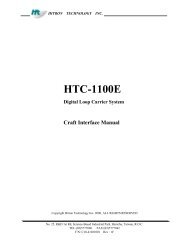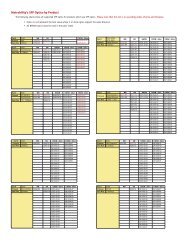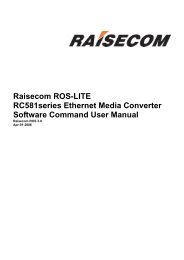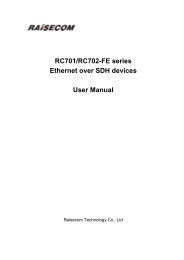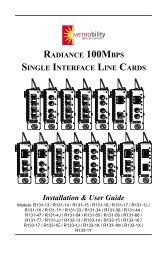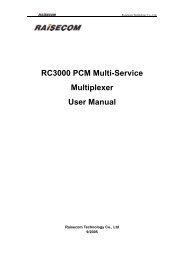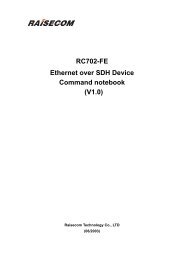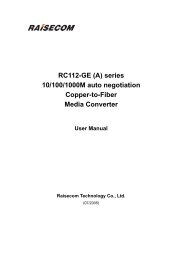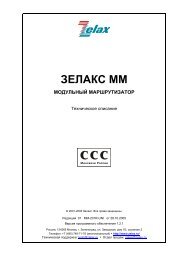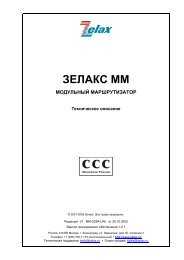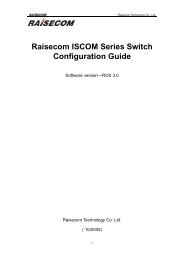OMS 3250
OMS 3250
OMS 3250
- No tags were found...
You also want an ePaper? Increase the reach of your titles
YUMPU automatically turns print PDFs into web optimized ePapers that Google loves.
Product Description<strong>OMS</strong><strong>3250</strong>- Extra Long 1550nm Single Mode Fibre: up to 80km• Supports LAN interconnect services (Transparent LAN Service - EPL)• Cheaper interconnect option for the end user than adding TDM interfaces to his LANswitch/router• Can upgrade host <strong>OMS</strong><strong>3250</strong> platform in service, without affecting other services• Increase range of services and hence revenue from SDH delivery platforms• No need for a separate LAN switch or router to provide the Gigabit Ethernet interface(s)• Provide monitored delivery of Ethernet transport services (remotely accessible counters,giving service level information to the operator)• No need for a separate LAN switch or router to monitor delivery performance• Map each interface into n x VC-4 capacity across the SDH network• Remotely configurable, in n x VC-4 steps, up to 1 Gigabit per Ethernet port (7 x VC-4)• LAPS (X.86)/GFP-F used to map Ethernet frames into SDH• Ethernet frames from each port can each be mapped into either a separate VC-4, or eachinto a VC-4-nv virtually concatenated payload, where n is 2 to 7• LCAS supported;• VC-4-7v provides Gigabit Ethernet transport throughput• Alternatively, frames can be mapped from each port into a separate VC-4-4c link• Transparent transport of VLAN frames• SDH transport protection retained• Gigabit Ethernet line protection is available3.4.3 Multi-Protocol Data cardThe Multi-Protocol Data card is a tributary card, providing 10 Multi-Protocol user interfaces orone 10 GbE user interface, which maps client signals into SDH Virtual Containers. The type andnumber of interfaces to be equipped is flexible through the use of pluggable modules (i.e. SFPand XFP). The card provides 11 Sockets: ten can be used when the card is configured as Multiprotocol,while one is dedicated to provide 10GbE services.The types of client signals that can be configured for each Multi-Protocol user interface aredivided into three main categories: Ethernet traffic (FastE and GbE), SAN traffic(ESCON/SBCON, Fibre Channel/FICON) and Digital Video (DVB-ASI).Each client signal is mapped into a single Virtual Concatenation Group through GFPencapsulation. Framed GFP mapping is applied to FastE, GbE and 10 GbE. This type ofmapping permits interworking with the Aggregation Data card. The card is open to supportTransparent GFP mapping for GbE. Transparent GFP mapping is applied to SAN traffic andDVB-ASI.Page 24 of 74 Copyright – Refer to Page 2 Issue 1



